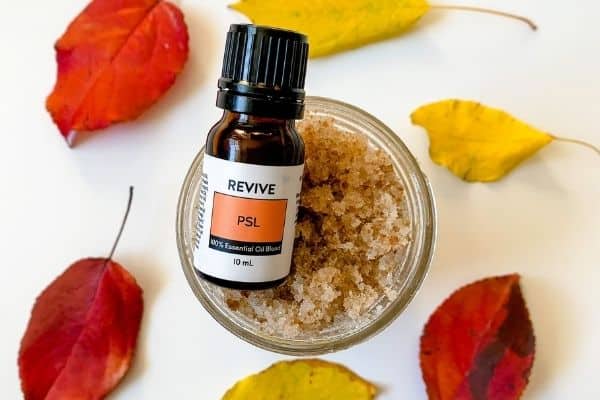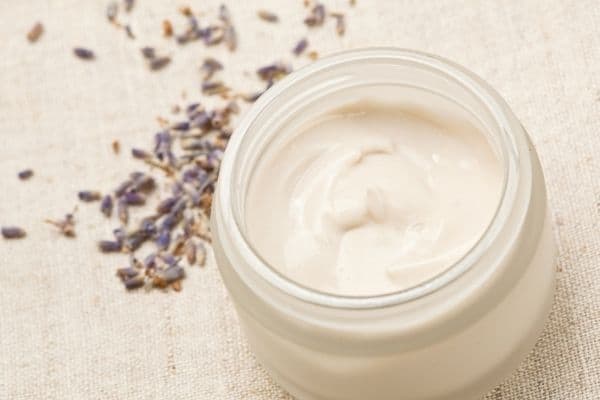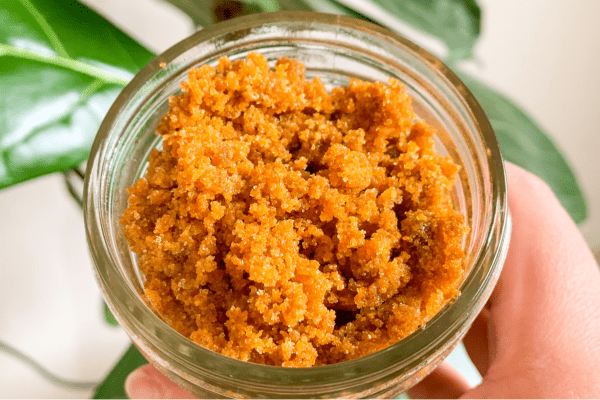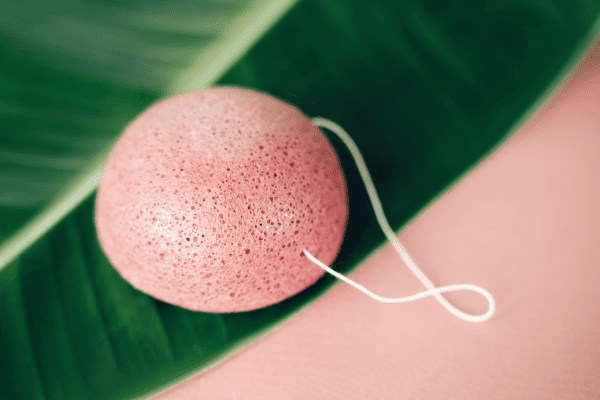Glycolic Acid and Vitamin C: Why You Should Use Them Together
Learn why this skin care combo promises proven results if used together and the best ways to incorporate Glycolic Acid & Vitamin C into your routine!
Hey beautiful! I know that amid the hustle and bustle of life, it’s easy to put self-care on the back burner. But it’s time to reclaim that radiant, youthful, healthy glow of yours!
Have you heard about the dynamic duo of skin care – Glycolic Acid and Vitamin C? These two potent ingredients promise to work wonders on your skin!!
Intrigued? Let’s dive in and I’ll show you how to work this powerful duo into your skincare routine!
This post contains affiliate links. You can learn more here.
Pin this image for later!
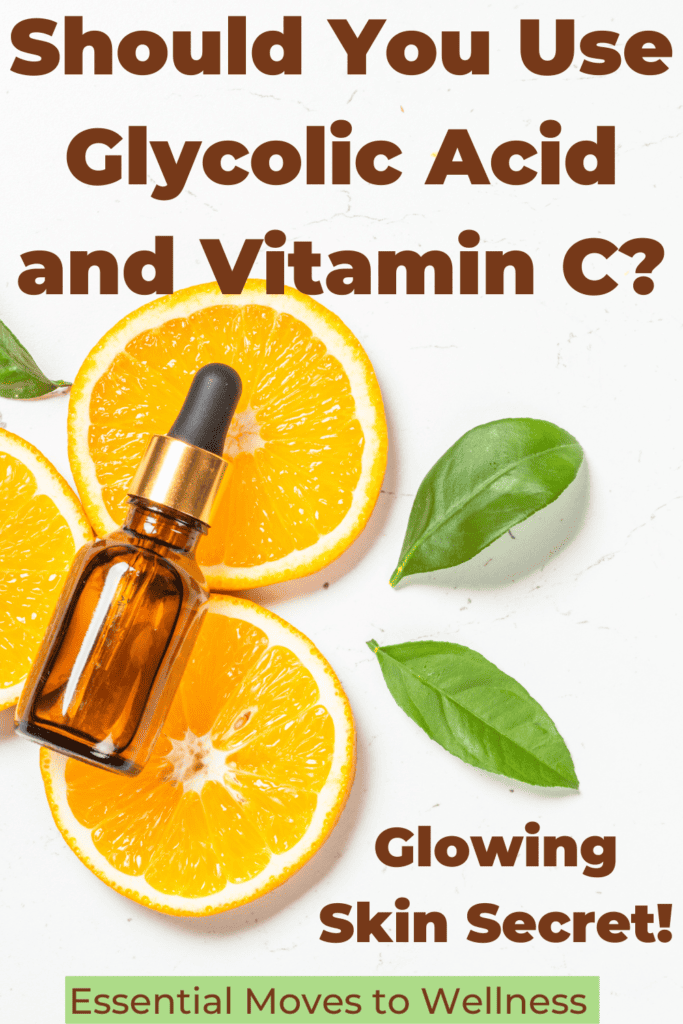
What is Glycolic Acid?
Glycolic Acid, often touted as a holy grail for exfoliation, is a type of Alpha Hydroxy Acid (AHA) derived from sugar cane. Its small molecular size allows easy penetration into the skin surface, making it a highly effective ingredient for skin treatments.
It’s commonly used in chemical facial peels, which have been showing very promising results for acne and acne scars, according a review found on the National Library of Medicine.
Glycolic Acid has many benefits! It gently exfoliates the skin by removing dead cells, revealing a brighter and fresher complexion underneath.
Regular use of Glycolic Acid can also improve the appearance of fine lines and wrinkles, lighten discolorations, such as dark spots and age spots, and smooth out rough texture, giving your skin a healthier, younger look.
It also aids in skin rejuvenation by stimulating the production of new skin cells. So, if radiant and revitalized skin is what you’re after, incorporating Glycolic Acid into your skincare routine might just be the answer!
What is Vitamin C?
Vitamin C, known scientifically as Ascorbic Acid, is one of the most powerful and effective nutrients in the world of skincare. It’s a potent antioxidant that can neutralize free radicals in the skin.
Free radicals, caused by factors like UV exposure and pollution, contribute to skin aging, by damaging the skin cells. Vitamin C is known for its ability to protect and repair the skin, maintaining its health and vitality.
There are tons of Vitamin C benefits.

Vitamin C helps to brighten the complexion, reduce inflammation, and promote healthy collagen production, resulting in firmer, more youthful-looking skin. Regular use of Vitamin C can also fade hyperpigmentation and sun spots, leading to a more even-toned complexion.
Plus, Vitamin C can enhance the effectiveness of your sunscreens and boost your skin’s defense against UV exposure.
With all these benefits, Vitamin C truly is a wonder ingredient for maintaining vibrant and youthful skin!
Why Should You Use Glycolic Acid and Vitamin C Together?
Glycolic Acid and Vitamin C are just like two good friends that work wonders for your skin when they get together!
Because together they offer a potent, holistic approach to skincare that addresses a broad spectrum of skin concerns.
Glycolic Acid is the real go-getter, kicking out the old, useless skin cells and making way for the good stuff, like Vitamin C, to really get in there and do its job.
Its exfoliating properties facilitate the removal of dead skin cells and aid in the penetration of other skincare ingredients, allowing them to work more effectively.
Meanwhile, Vitamin C is like your skin’s guard dog, chasing off the nasty free radicals and helping your skin to build up collagen and repair itself.
When used together, these ingredients can help to reveal a smoother, brighter skin tone and complexion, reduce signs of aging, and improve overall skin health.
But these are strong ingredients, so it’s important to take it slow. Pay attention to your skin’s reactions, especially if you have sensitive skin.
How to Use Glycolic Acid and Vitamin C Together
If you are ready to add a Glycolic Acid product and Vitamin C to your skin care routine, I highly recommend using a Vitamin C serum and a Glycolic Acid facial peel mask.
My favorite serum is Kora Organics Noni Bright Vitamin C Serum.
It’s packed with potent, organic ingredients that brighten and tighten your skin. Plus, Noni fruit extract is rich in antioxidants, reducing cellular damage and promoting skin health.
This serum also hydrates and nourishes the skin, leaving it soft, supple, and radiant!
And GoopGlow Glycolic Acid Overnight Glow Peel is my favorite Glycolic Acid mask.
It gently exfoliates the skin, removing dead skin cells and uncovering a fresh, radiant complexion. The peel works overnight, aligning with your skin’s natural repair process to improve skin texture and tone.
The result is smoother, clearer skin that just glows! The serum can be applied daily to nourish your skin and fight off free radicals, while the Glycolic Acid mask can be used weekly to exfoliate and rejuvenate your skin.
This combination allows you to reap the full benefits of both ingredients, ensuring a smoother, brighter, and healthier complexion.
When using a serum and a Glycolic Acid facial peel mask, it’s important to follow the right order, though, to maximize their benefits and minimize the risk of a reaction.
I have instructions on how to use glycolic acid and vitamin C together down below, or you can save this graphic for later!

Here’s how to do it:
- Start by cleansing your face to remove any makeup, dirt, and impurities.
- Apply the presoaked mask pad evenly over your face, neck, chest, and shoulders before bed. Do not rinse it off. Apply moisturizer after 15 minutes, if you like.
- In the morning, follow your usual skincare routine. Apply your Vitamin C serum after washing and toning your face. Allow the serum to absorb into your skin for a few minutes.
- Follow up with a moisturizer to hydrate and nourish your skin.
- Finish with sunscreen. Glycolic Acid and Vitamin C can make your skin more sensitive to UV rays, so sunscreen is crucial to protect your skin from sun damage
Glycolic Acid can be harsh, so be careful and avoid using it too frequently. Don’t use it on the same days you use other exfoliating products.
Alternatively, if you want a routine that’s a little more chill without remembering to apply a facial once a week, you can give the Daily Acid Toner by Josh Rosebrook a try! The formula is gentle enough to be used on a daily basis but still packed with the benefits of glycolic acid.
The process of using glycolic acid and vitamin C together safely would look like this:
- Cleanse your face with your regular cleanser.
- Apply a few drops of the Daily Acid Toner to a cotton round and gently swipe it all over your face.
- Apply the vitamin C serum directly after, and follow up with your moisturizer. That’s it!
The bottom line: Make sure that you apply your glycolic acid first, so it can pave the way for your vitamin C product to work its magic.
Frequently Asked Questions
I know you might have a few questions about this dynamic duo, so, to clear up any confusion, I’ve rounded up some of the most frequently asked questions, along with some pretty straightforward answers.
If I didn’t cover your question, leave a comment below! I’m happy to help 🙂
Can I Use Vitamin C and Glycolic Acid Together?
Absolutely! In fact, using these two ingredients together can provide even better results than using them separately. Both Vitamin C and Glycolic Acid work together to brighten and exfoliate the skin, promoting a smoother and more radiant complexion.
What Not to Mix with Glycolic Acid?
While Glycolic Acid can be safely used with other skincare ingredients, there are a few that you should not combine glycolic acid with, to prevent any potential aggravation or sensitivity. These include:
- Benzoyl Peroxide: This ingredient is commonly found in acne treatments and can cause excessive dryness and irritation when used with Glycolic Acid.
- Salicylic Acid : Similar to benzoyl peroxide, Salicylic Acid can also cause excessive dryness and irritation when used with Glycolic Acid. I’m also a bit biased against salicylic acid because it destroyed my skin as a teenager.
- Retinol: These two powerful ingredients can be too harsh when used together and may cause irritation. It’s best to alternate between using Glycolic Acid and retinol on different days.
Can You Mix Glycolic Acid and A Vitamin C Serum?
Yes, you can! As mentioned earlier, combining Glycolic Acid and Vitamin C is a great for brighter and smoother skin. Just be sure to introduce them into your skincare regimen gradually to allow your skin to adjust.
Can You Use Retinol, Vitamin C and Glycolic Acid Together?
Yes, you can use all three of these ingredients together. However, as mentioned before, it’s important to introduce them into your routine slowly and carefully. Start by using one ingredient at a time and gradually incorporate the others, making sure to monitor how your skin reacts.
Using too many active ingredients at once can be overwhelming for your skin and may aggravate it. I’d recommend alternating between retinol and glycolic acid.
Before You Go…
Want to learn more about Glycolic Acid? Check out my blog post Glycolic Acid vs. Salicylic Acid: Which is Better? for an in-depth comparison of the two!
Understand the pros, cons, and unique benefits of each acid to decide which one best suits your skincare needs.
Find out more at Essential Moves to Wellness – where I believe that caring for your skin is a crucial part of wellness!!
Let’s take this clean beauty journey together!
Related to Glycolic Acid and Vitamin C
How to Start Your Clean Beauty Transition Without Losing Your Mind
A Quick Guide to Starting a Natural Skin Care Routine for Beginners
Vitamin C Serum Side Effects and Benefits (Read Before You Buy!)


